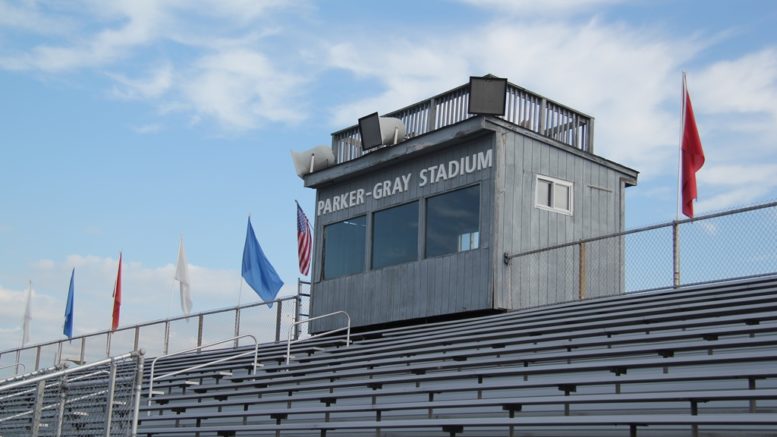On October 29, 2010, the T.C. Williams administration rented portable lights for a Friday night football game against South County High School at Parker-Gray Stadium.
Since then, those in favor of renovating the T.C. home football and soccer field have pointed to that night as an example of the school spirit and community unification that a new lighted field could inspire. Those opposed to a stadium renovation claim the night as a cautionary tale of the mischief that T.C.’s “gangs”, as one area resident has called some students, on lighted weekend nights will wreak in the neighborhood.
The fight to renovate the stadium–a process that would include new turf, a new press box, ticket booth, bleachers, concession stand, permanent bathrooms, and, of course, lights–has come to a climax in recent years. In last year’s budget for the Alexandria school system, known as the Capital Improvement Program (CIP), former superintendent Alvin Crawley allocated $4,125,000 for work on “exterior sports areas” at the T.C. King Street campus, a proposal that the School Board passed.
The 2019-2028 budget presented just weeks ago by Dr. Lois Berlin, the interim superintendent of ACPS, commissioned an architectural design for the stadium’s new features. School Board member Bill Campbell said that ACPS is satisfied with the design that was ordered in Berlin’s budget, and that the plan will be submitted to the city’s planning and zoning committee.
And yet, supporters of the stadium renovation have lamented that the changes are still a long way off. The T.C. Williams Stadium Initiative, a collection of prominent Alexandrians, ACPS parents and other community members, has been one of the most influential advocates for a stadium renovation. Sue Setliff, the initiative’s director, said that when she started the group she “felt like this was going to be a long process.” Now, about two years since the organization’s founding, she admits that it has been.
Mike Porterfield, another member of the Stadium Initiative and former football player, wrestler, and All-American rower at T.C., said, “It’s a touchy subject–it’s not as easy as paying for the lights and putting them up.”
The chief obstacle that the renovation effort has faced is emphatic resistance from neighbors of the football field–especially those on Bishop Lane and Woods Avenue. A handful of families from this neighborhood, which is immediately adjacent to the stadium, have prevented any construction on the stadium. Their argument is that if lights are installed, noise and light from evening events will spill over into their yard–which, in turn, will lower the property value of their houses.
This resistance has frustrated many renovation supporters, who say it is unfair that a group of people numbering in the teens is able to prevent changes that would benefit thousands. Setliff said that, as neighbors, “They have a right to be a part of the process, but it’s gone beyond just that.”
Compromises have been suggested before at meetings on this issue. Campbell said that one proposal is to promise the neighbors that the lights will be used on only a certain number of nights a year–50 is a realistic estimate, he says.
“I think we are handling this lights issue well,” said Campbell. “I think it will pass.”

